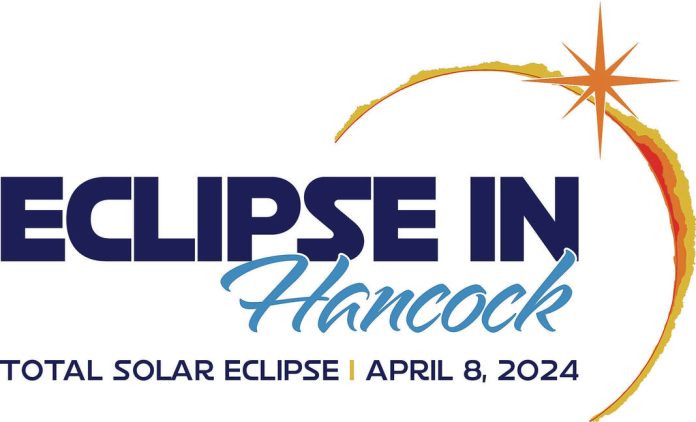On April 8, history will be made as the moon will completely cover the sun over Hancock County skies for the first time in 1,193 years.
I wish for the experience of a lifetime with neither clouds nor eye-related injuries.
No special rays are given off during an eclipse, making the day just like any other when going outside. Do not stare at the sun without eye protection just like you normally wouldn’t. A 99% eclipsed sun shines 10,000 times brighter than a full moon. It becomes tempting to look at a partially-eclipsed sun because it doesn’t seem as bright as normal. Don’t be deceived – The same rays that burn your skin can also singe your retinas. Unlike skin, retinas contain no pain receptors and can burn without you feeling it.
Total eclipses have three distinct phases: initial partial, totality, and final partial. The only safe time to look directly at the sun without any eye protection is the four-minute totality phase. The initial partial phase begins at 1:51 p.m. as the moon takes the first “bite” out of the sun. In the southern sky, that first nibble comes from the sun’s bottom-right quadrant. From 1:51-3:06, there are two safe ways to view the initial partial phase: directly (looking at the sun) with eye protection or indirectly (looking at the sun’s effects).
Utilize both strategies to safely view the partial phase before and after totality. For direct viewing, use either ISO 12312-2 certified eclipse glasses/viewers or a welder’s mask with a rating of 13 or 14. Nothing else. The darkest sunglasses do not offer nearly enough protection to look directly at the sun without risking serious damage to your eyes. If you have a welder’s mask and aren’t sure of the rating, don’t use it.
Two large American manufacturers directly sell eclipse glasses: American Paper Optics (www.eclipseglasses.com) and Rainbow Symphony (www.rainbowsymphony.com). I’m leery about buying glasses from internet retailers. Stories abound from 2017’s eclipse where people bought glasses only to learn they weren’t ISO 12312-2 compliant even though the listing, and in some cases the glasses, said they were.
To test eclipse glasses, put them on. If you can see anything through them under normal light, throw them away. Look directly at a lampshade from about 3 feet. If you can see any light from the lamp, throw them away. Stare at the flashlight of your phone through your glasses. The light should be a dim, orangish pinpoint. If not, throw them away.
Can you reuse 2017 eclipse glasses? Possibly, but I wouldn’t. The manufacturers recommend discarding them after three years. Glasses are relatively cheap, and we only have one set of eyes. I plan on using a new pair.
To view the partial eclipse directly, look at the sun using eye protection for no more than a few seconds at a time. Then talk with friends, make some observations, or switch to an indirect viewing strategy. After a few minutes, look again. Notice how the sun’s appearance changes.
Indirect viewing strategies include pinhole projection and looking at shadows created by tree leaves, loosely interlocked fingers, or spaghetti colanders. Directions for making a pinhole projector and examples of other indirect viewing methods can be found through a simple Google search.
When totality begins at 3:06, remove your eye protection and look at the sun. The direct light is totally blocked, and the sun’s corona (Latin for crown) appears. Bask in totality’s twilight. At 3:10 when totality ends, return to the same direct (with eye protection) and indirect viewing strategies used before totality.
Cameras need special solar filters. Even with a filter, I ruined a camera’s electronics during a partial eclipse in 2021. Never look at the sun through an optical viewfinder. Doing so could quickly damage your eyes.
Never look at the sun through binoculars or telescopes without a professional astronomer’s guidance. Without proper protection, eye damage may be instant and permanent.
With a viewing strategy and inexpensive eye protection, eclipse day will be memorable. Your eyes will thank you.
Charlie Hart lives with his wife and two children in central Indiana and works for a digital marketing firm in Fishers. Having grown up in northern Shelby County, he spent many of his teenaged summer nights playing basketball and tennis under the stars at Riley Park in Greenfield. He taught fifth grade at Greenfield Intermediate School from 2014-2021 and helped coordinate his school’s partial eclipse party in 2017.





